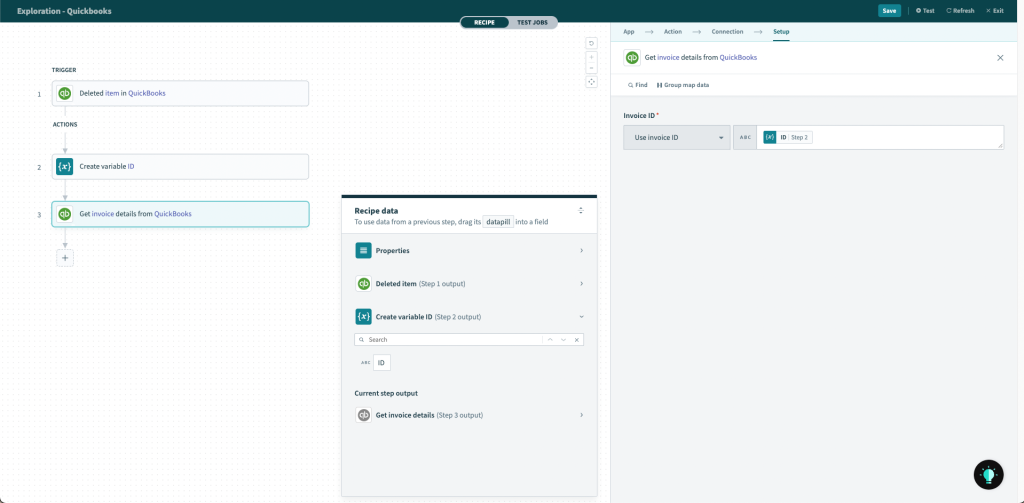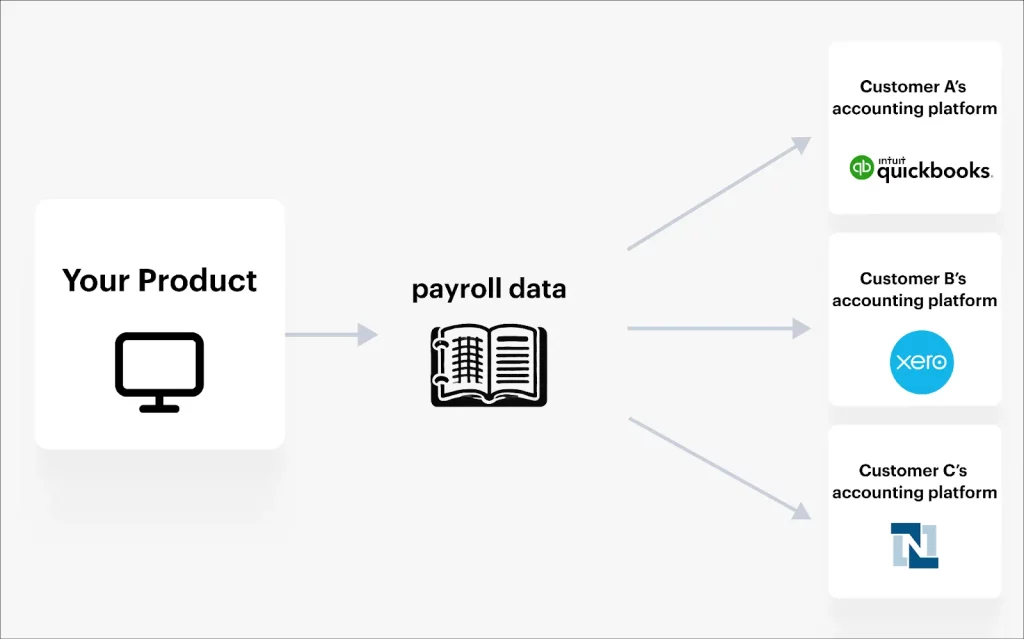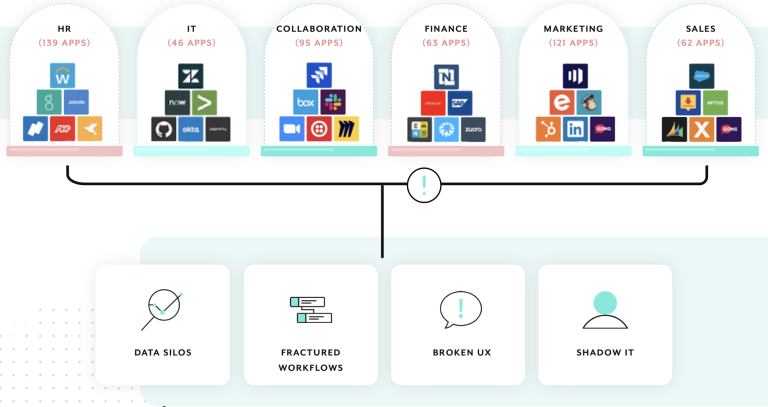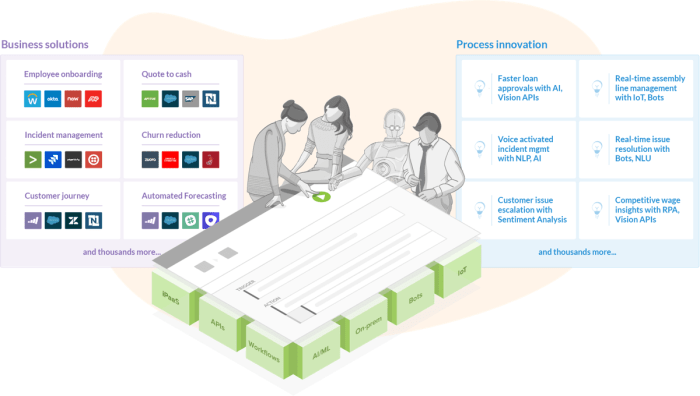Workato QuickBooks Streamlined Automation
Workato QuickBooks integration unlocks powerful automation opportunities for businesses. This guide dives deep into practical applications, troubleshooting common issues, and exploring advanced techniques for seamless financial process management. We’ll examine how businesses leverage this integration to streamline workflows and improve overall efficiency.
From simple tasks like automatically transferring data to more complex scenarios involving custom fields and high-volume transactions, this exploration covers the entire spectrum of Workato QuickBooks integration. The guide also provides a structured approach to resolving potential problems that might arise during the integration process.
Workato and QuickBooks Integration Overview

Connecting Workato to QuickBooks empowers businesses to streamline financial processes and automate critical tasks. This integration provides a robust bridge between these two platforms, enabling seamless data flow and improved operational efficiency. By automating repetitive tasks, businesses can free up valuable time and resources for more strategic initiatives.
Common Use Cases for Workato-QuickBooks Integration
Businesses leverage Workato’s integration with QuickBooks for a variety of purposes. A common use case involves automating the import of invoices from various sources into QuickBooks for automated processing. Another key use is the synchronization of inventory data between Workato and QuickBooks, ensuring accurate inventory records across systems. This integration also enables businesses to reconcile bank transactions, track expenses, and manage accounts payable/receivable more efficiently. The benefits extend to reporting and analysis, enabling businesses to generate customized reports based on integrated data.
Ways Businesses Utilize Automation
Businesses utilize this integration in several ways to automate workflows. One example involves automatically transferring customer data from CRM systems to QuickBooks for enhanced customer relationship management. Another crucial application is automating the process of creating purchase orders from Workato based on sales data and then automatically sending these orders to QuickBooks for processing. This automated process streamlines purchasing and inventory management, reducing errors and improving efficiency. This integration also allows businesses to automate the payment of bills and invoices, improving cash flow management.
Benefits of Automating Workflows
Automating workflows between Workato and QuickBooks yields numerous advantages. Reduced manual data entry minimizes errors and saves significant time, improving accuracy and efficiency. This automated process also allows businesses to gain a holistic view of their financial data, facilitating better decision-making. Moreover, automated workflows improve compliance by ensuring data consistency and adherence to predefined procedures.
Typical Automated Tasks, Workato QuickBooks
This integration streamlines numerous tasks. Below are some common examples:
- Automated data import/export: This allows seamless transfer of data from various sources into QuickBooks and vice-versa. This significantly reduces manual data entry, minimizing errors and ensuring data accuracy.
- Invoice processing: Automating the process of receiving, processing, and recording invoices in QuickBooks saves time and resources. It eliminates manual steps, reducing the risk of human error.
- Reconciliation of bank transactions: Automatically matching bank transactions to QuickBooks entries reduces reconciliation time and minimizes discrepancies.
- Inventory management: Synchronization of inventory data between Workato and QuickBooks maintains real-time inventory accuracy, preventing stockouts and overstocking.
Automated Tasks Table
The table below lists some typical tasks that can be automated using the Workato-QuickBooks integration.
| Task | Description | Workato Action | QuickBooks Action |
|---|---|---|---|
| Invoice Import | Import invoices from various sources into QuickBooks. | Retrieve invoice data from the source system. | Create new invoices in QuickBooks. |
| Expense Tracking | Track expenses and categorize them in QuickBooks. | Extract expense data from expense reports. | Create and categorize expense entries. |
| Inventory Management | Synchronize inventory levels between Workato and QuickBooks. | Update inventory data in Workato. | Update inventory levels in QuickBooks. |
| Customer Data Transfer | Transfer customer data from a CRM to QuickBooks. | Retrieve customer data from CRM. | Create or update customer records in QuickBooks. |
Troubleshooting and Common Issues

Source: syncari.com
Integrating Workato with QuickBooks can sometimes present challenges. Understanding potential problems and their resolutions is crucial for smooth operation. This section details common issues and provides practical troubleshooting steps.
Potential Integration Errors
Issues during Workato-QuickBooks integration can stem from various factors, including network connectivity problems, incorrect data mappings, or configuration discrepancies within either platform. Careful attention to detail during setup and ongoing monitoring can mitigate these issues.
Data Mapping Errors
Incorrectly mapping data fields between Workato and QuickBooks is a frequent source of errors. Fields might not align correctly, leading to data inconsistencies or the inability to transfer data accurately. Double-checking data types, field names, and formats is paramount. Mismatched data types can result in data loss or transformation errors. For instance, a numerical field in QuickBooks might be treated as text in Workato, leading to calculation issues.
Network Connectivity Problems
Interruptions or instability in network connectivity can significantly impact the integration process. Slow internet speeds or firewall restrictions can cause delays or timeouts. Ensure that the network connection is stable and has sufficient bandwidth to handle the data transfer volume. Check for any firewall rules that might be blocking communication between Workato and QuickBooks. If connectivity is an issue, consider a more stable network or adjusting Workato’s polling interval.
Authentication Issues
Authentication failures frequently arise from incorrect credentials or expired tokens. Ensure that the credentials used for authentication are valid and up-to-date. Workato needs appropriate access permissions to access the QuickBooks data. If authentication fails repeatedly, review the credentials and ensure the API keys are correct and active.
Troubleshooting Table
| Error | Cause | Solution | Workaround |
|---|---|---|---|
| Data mismatch | Incorrect data mapping in Workato | Review and correct the data mapping configuration in Workato to match QuickBooks field names and data types. | Temporarily extract data from QuickBooks in a different format and re-map it in Workato. |
| Integration timeout | Slow network connection or insufficient bandwidth | Ensure a stable network connection and sufficient bandwidth. Consider increasing Workato’s polling interval. | Run the integration during off-peak network hours. |
| Authentication failure | Incorrect or expired API credentials | Verify API credentials, ensuring they are valid and up-to-date. If necessary, regenerate the API keys. | Use alternative authentication methods if available. |
| Data loss | Data type mismatch during mapping | Correctly map data types in Workato to match QuickBooks data types. | Use Workato’s data transformation capabilities to convert data types before processing. |
Practical Approach to Diagnosing Integration Problems
A systematic approach to diagnosing integration issues involves logging error messages, checking Workato logs for specific details about failed steps, and scrutinizing QuickBooks for any related problems. A step-by-step approach to resolving issues is crucial. For example, check network connectivity first, then verify data mappings, and lastly, validate authentication details. Thorough analysis of error messages provides valuable insights. Using a dedicated troubleshooting document can help track steps and solutions.
Advanced Integration Techniques: Workato Quickbooks

Leveraging Workato’s capabilities, businesses can streamline complex financial processes by automating intricate workflows and managing large data sets efficiently. This section dives into advanced integration techniques, offering practical examples and strategies for optimizing the interaction between Workato and QuickBooks.
Integrating custom data transformations and fields empowers businesses to tailor their workflows to specific needs. Managing complex financial processes in QuickBooks, such as recurring billing and advanced reporting, is also detailed. The section further explores techniques for handling large datasets, crucial for companies dealing with significant transaction volumes.
Complex Automation Scenarios
Workato’s robust automation capabilities allow for intricate scenarios, such as automating the reconciliation of bank statements with QuickBooks entries. This involves extracting data from bank feeds, validating transactions, and matching them against QuickBooks records. Another example is the automated creation of purchase orders from a customer relationship management (CRM) system, with the system automatically creating corresponding vendor invoices in QuickBooks. Furthermore, Workato can trigger QuickBooks updates based on specific inventory levels, automatically adjusting inventory records and ordering new stock when needed.
Custom Field Integration and Data Transformations
Integrating custom fields or data transformations within Workato workflows involves configuring custom mappings. For instance, if QuickBooks lacks a specific field, Workato can extract the relevant information from another source, such as an external database, and populate the desired field in QuickBooks. This can include calculations, such as converting units from one measurement to another or calculating taxes based on sales. Specific examples include converting product descriptions from a format not supported in QuickBooks to one that is, or extracting product specifications and converting them to QuickBooks fields.
Managing Complex Financial Processes
Workato can handle intricate financial processes in QuickBooks, including recurring billing. For example, Workato can automatically generate and send invoices for recurring subscriptions based on pre-defined schedules, updating QuickBooks records accordingly. This includes handling complex payment schedules and generating reports on outstanding balances for recurring subscriptions. Further, Workato can automate the reconciliation of payments, matching them to corresponding invoices and updating QuickBooks records.
Handling Large Data Sets
When dealing with substantial data volumes, strategies for optimizing the integration are crucial. Using Workato’s batch processing capabilities is one method. This involves processing data in manageable chunks, ensuring QuickBooks does not become overloaded. Alternatively, Workato’s scheduled tasks can efficiently process large data sets without disrupting QuickBooks’s performance. The approach to choose depends on the frequency of data transfers and the specific demands of the QuickBooks instance.
Optimizing Integration Performance
Several strategies can optimize integration performance for high-volume transactions. One strategy involves optimizing Workato’s data transformations to minimize processing time. Furthermore, using Workato’s scheduled tasks feature for processing data in batches can improve efficiency. Lastly, choosing the correct data connection type can significantly affect performance. Using direct API connections for transactions, instead of relying on file uploads, is often the most efficient method.
Ultimate Conclusion

In conclusion, Workato QuickBooks integration offers a robust solution for automating various financial processes. By understanding the diverse use cases, troubleshooting common problems, and mastering advanced techniques, businesses can optimize their workflows and gain significant advantages. The detailed exploration of integration scenarios, from basic to advanced, equips users with the knowledge to effectively leverage this powerful tool for improved efficiency and data management.






